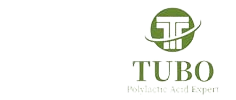In a world where materials must do more—last longer, withstand harsher conditions, and meet rising sustainability standards—DuPont paper has emerged as a top-tier solution. Unlike traditional paper made from wood pulp, DuPont’s engineered papers are synthetic or composite materials designed with performance in mind. They combine the look and feel of conventional paper with advanced physical properties that enable their use in demanding industrial, commercial, and environmental contexts.
From harsh outdoor conditions to precision printing, DuPont paper provides a unique set of advantages that set it apart from ordinary substrates. Below, we explore these strengths in detail.
1. Exceptional Durability
One of the most important advantages of DuPont paper is its exceptional durability. Where traditional paper tears, wrinkles, or degrades under stress, DuPont paper maintains its form and function. It resists abrasion, punctures, and repeated handling, making it ideal for applications such as industrial labeling, instruction manuals, and rugged field guides.
In environments like warehouses, construction sites, or outdoor events, materials are often exposed to rough treatment. DuPont paper withstands these conditions effortlessly, reducing the need for replacements and minimizing downtime.
2. Water and Moisture Resistance
Unlike standard paper that becomes unusable when wet, DuPont paper resists water and moisture. This makes it an ideal choice for products exposed to rain, humidity, or condensation. Whether used for outdoor signage, marine maps, or packaging inserts, it retains its structural integrity and legibility even after extended exposure to moisture.
Moisture resistance is also critical in food packaging and medical applications, where hygiene and protection are essential. DuPont papers can prevent water ingress without compromising breathability when needed.
3. Chemical Resistance
DuPont paper resists many common chemicals, oils, and solvents. This property is especially beneficial in industries such as pharmaceuticals, agriculture, automotive, and manufacturing—where exposure to corrosive substances can degrade ordinary materials.
Labels, tags, and documents made with DuPont paper can be used confidently in chemical plants, laboratories, or industrial kitchens without fear of smearing, staining, or breakdown.
4. Print Compatibility
Despite its synthetic composition, DuPont paper offers excellent printability. It supports a wide variety of printing technologies, including offset, flexographic, gravure, screen, and digital printing. The smooth surface ensures sharp image reproduction, vibrant color accuracy, and high-resolution detailing.
This print quality makes DuPont paper a popular choice for premium packaging, brand marketing, promotional materials, and even fine art reproductions. Whether you’re printing barcodes or brochures, the results are clean, professional, and durable.
5. Tear Resistance
One of DuPont paper’s standout mechanical properties is its resistance to tearing. This is especially important for products like shipping tags, identification wristbands, luggage labels, and outdoor posters that may be pulled, stretched, or snagged during use.
Even when subjected to bending or folding, DuPont paper retains its integrity without splitting—ensuring the information remains intact and readable.
6. Lightweight with High Strength
DuPont paper is designed to be lightweight without sacrificing strength. This balance makes it suitable for transport and logistics-related applications where weight must be minimized to reduce shipping costs, but durability is still critical.
The high strength-to-weight ratio also means less material can do more—contributing to cost-efficiency and environmental sustainability.
7. Dimensional Stability
Dimensional stability refers to a material’s ability to maintain its shape and size despite changes in temperature, humidity, or mechanical stress. DuPont paper excels in this area. It doesn’t curl, shrink, or expand under challenging conditions.
This stability is especially crucial for precision applications such as technical schematics, blueprints, or layered labels, where dimensional distortion can lead to misalignment or inaccurate readings.
